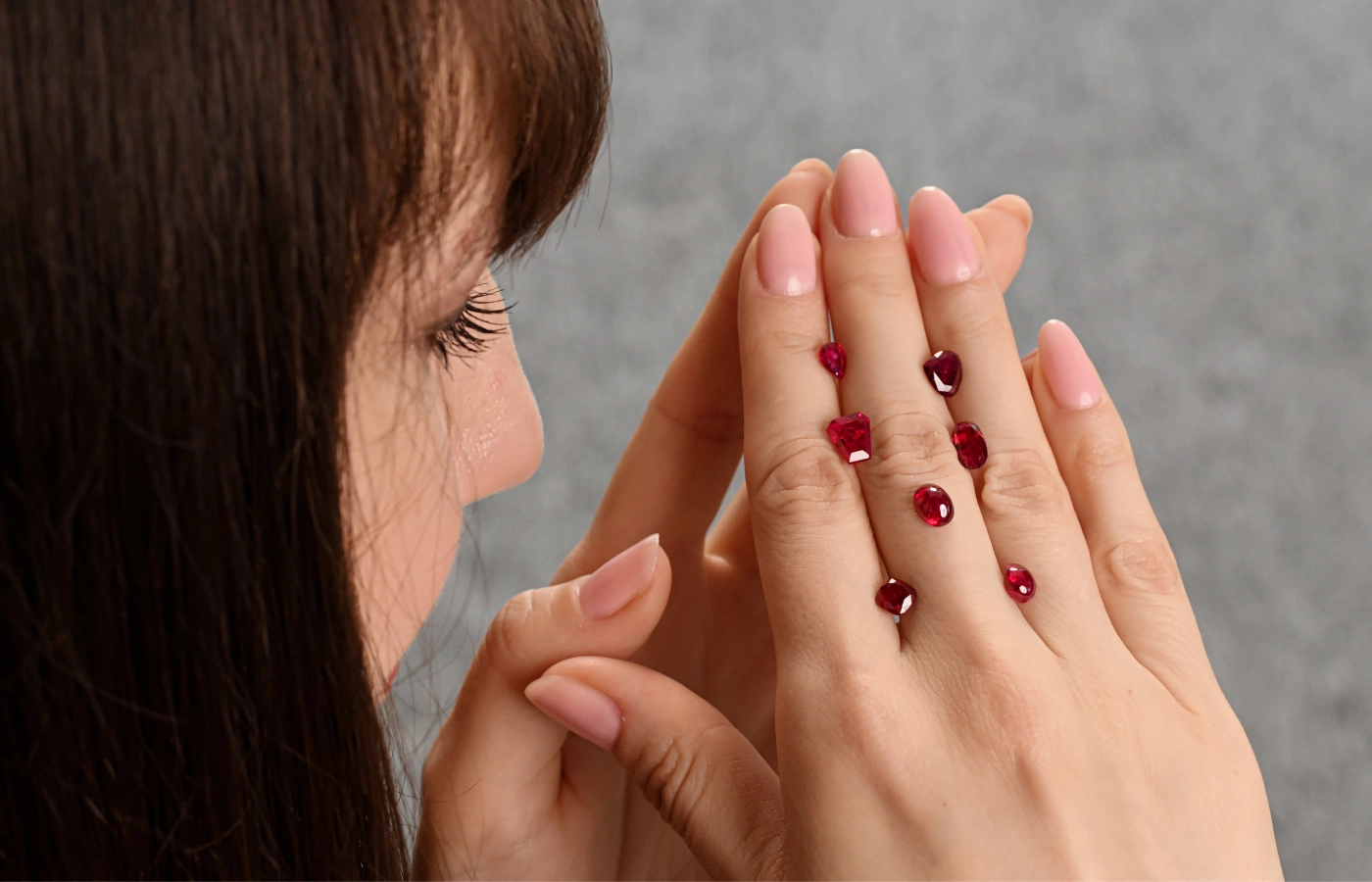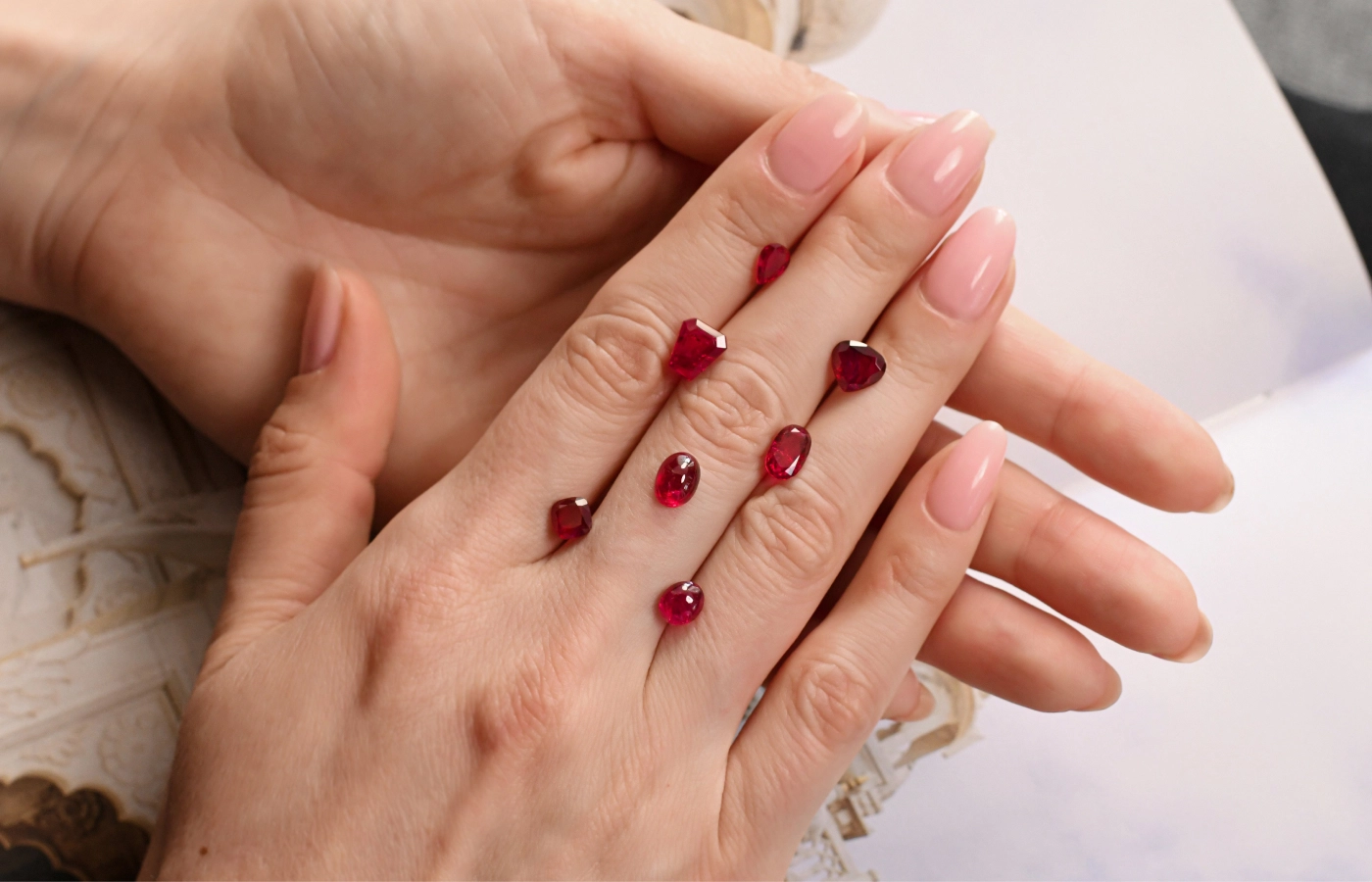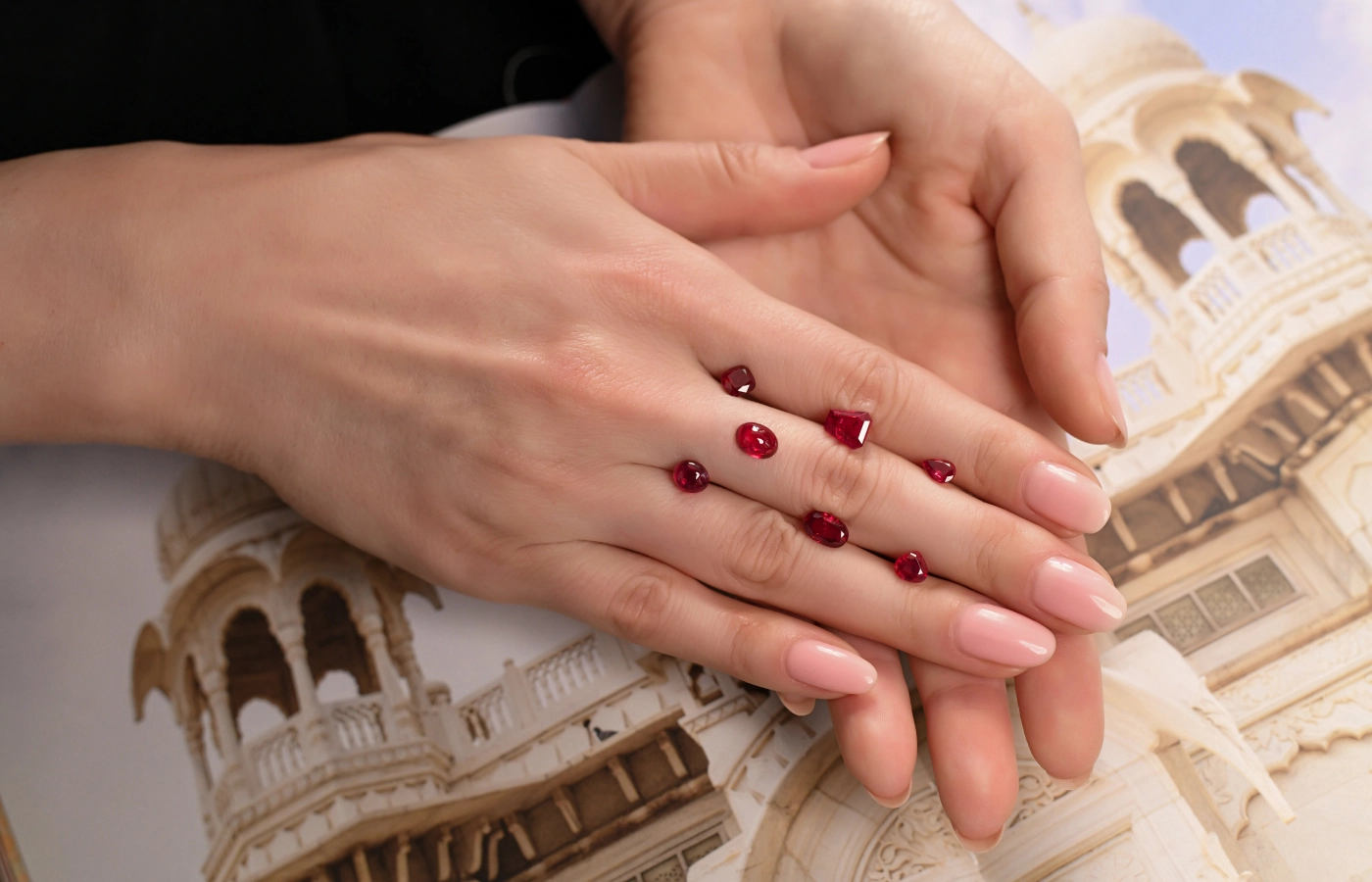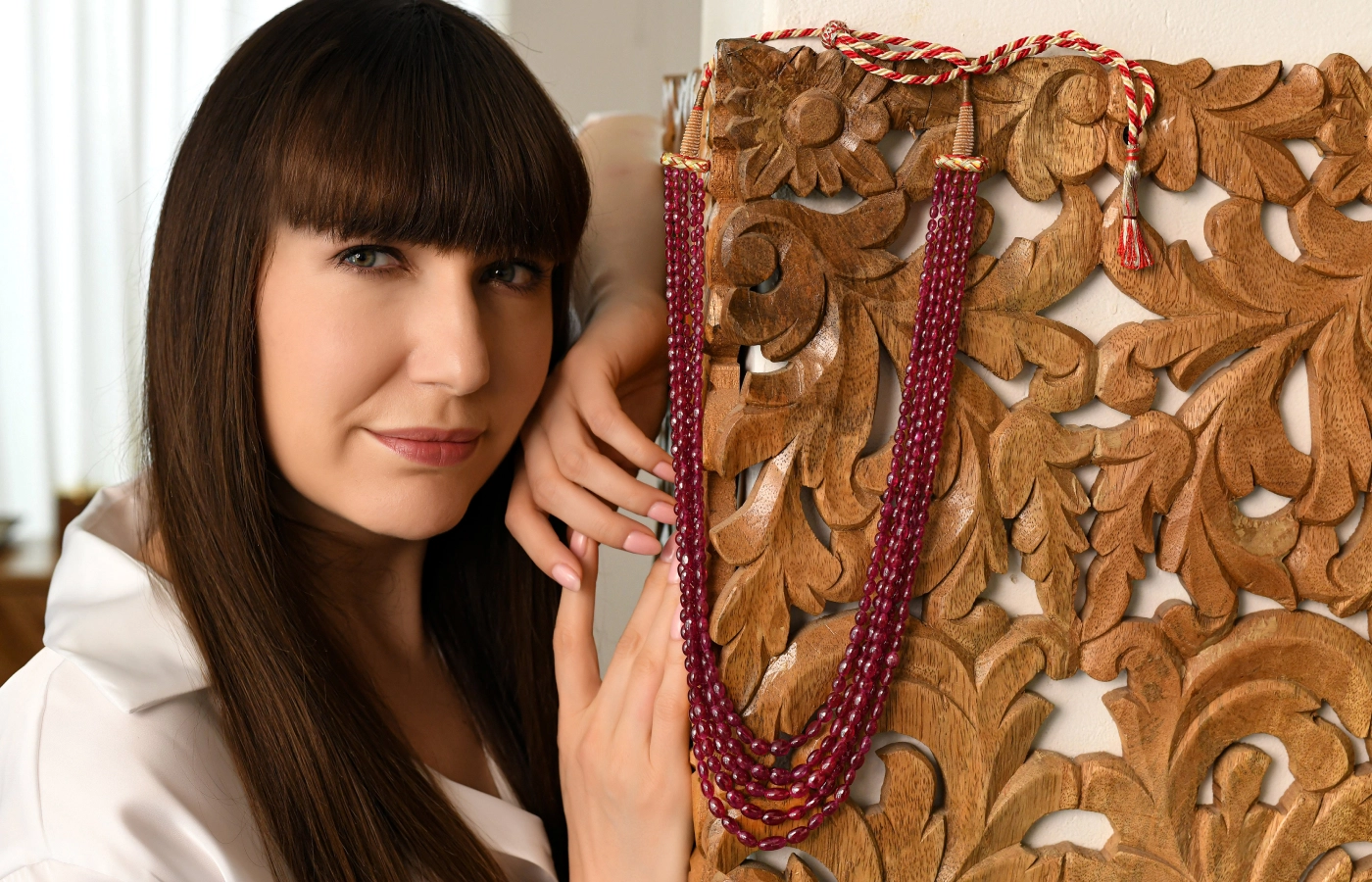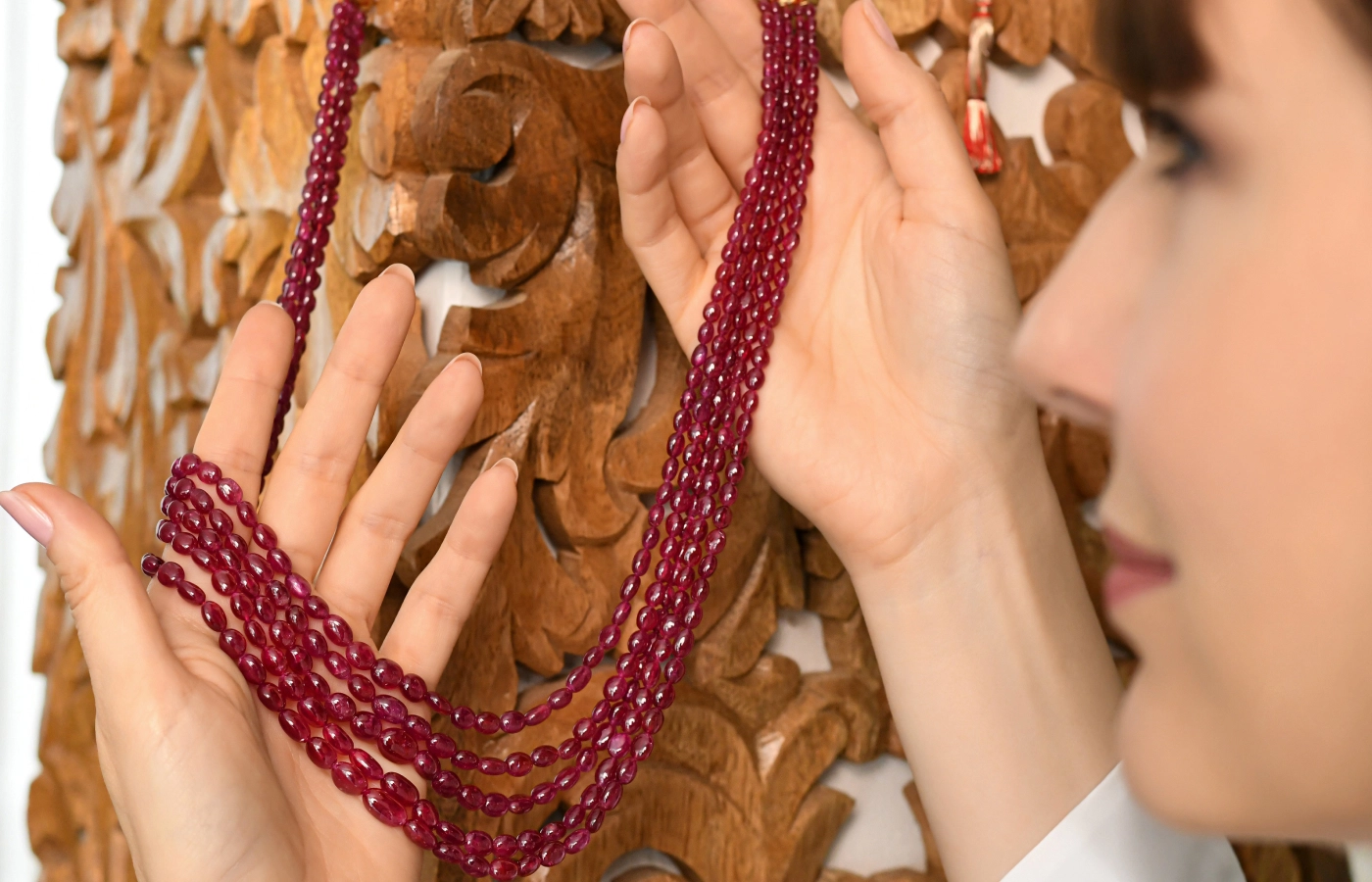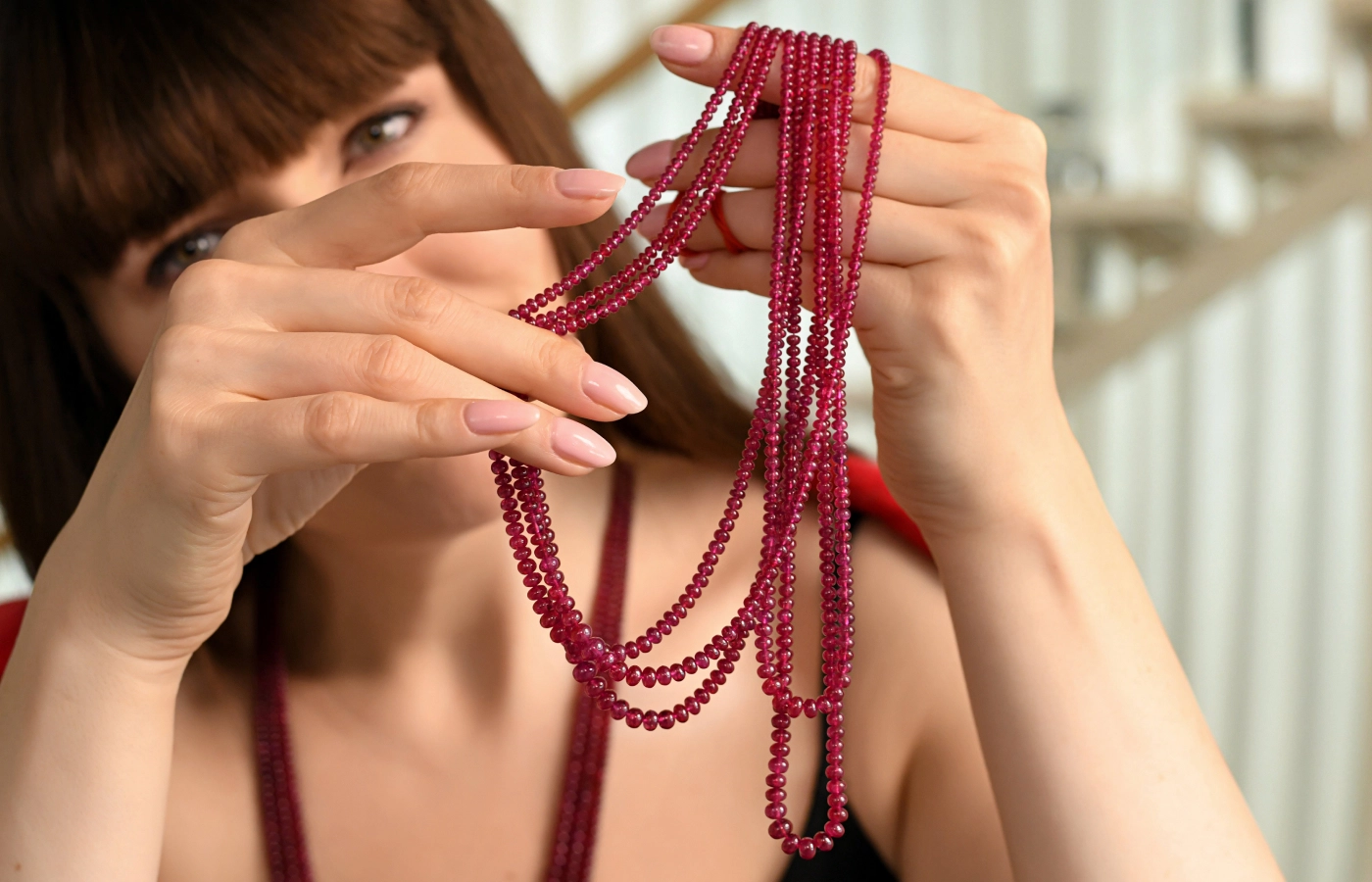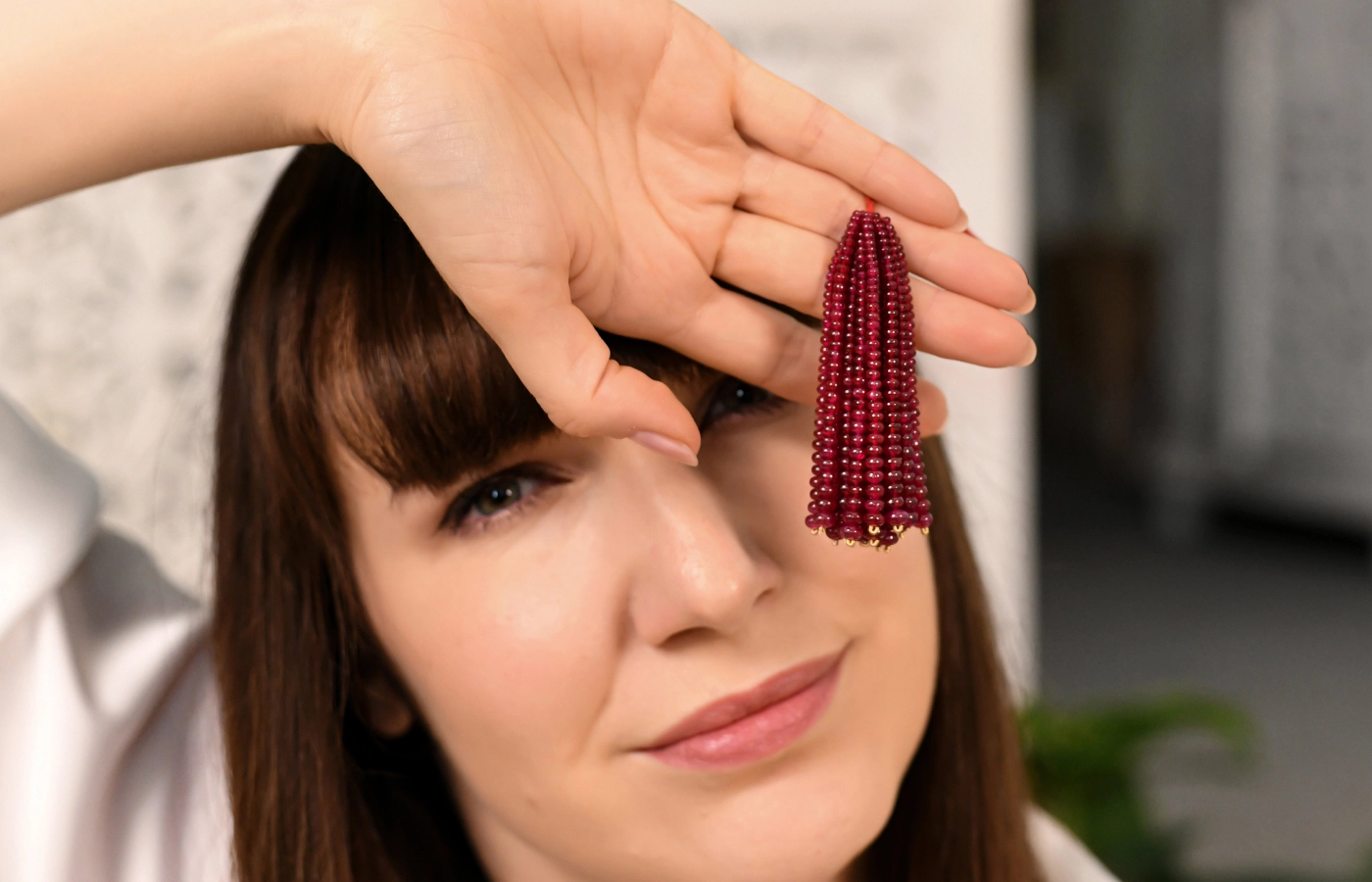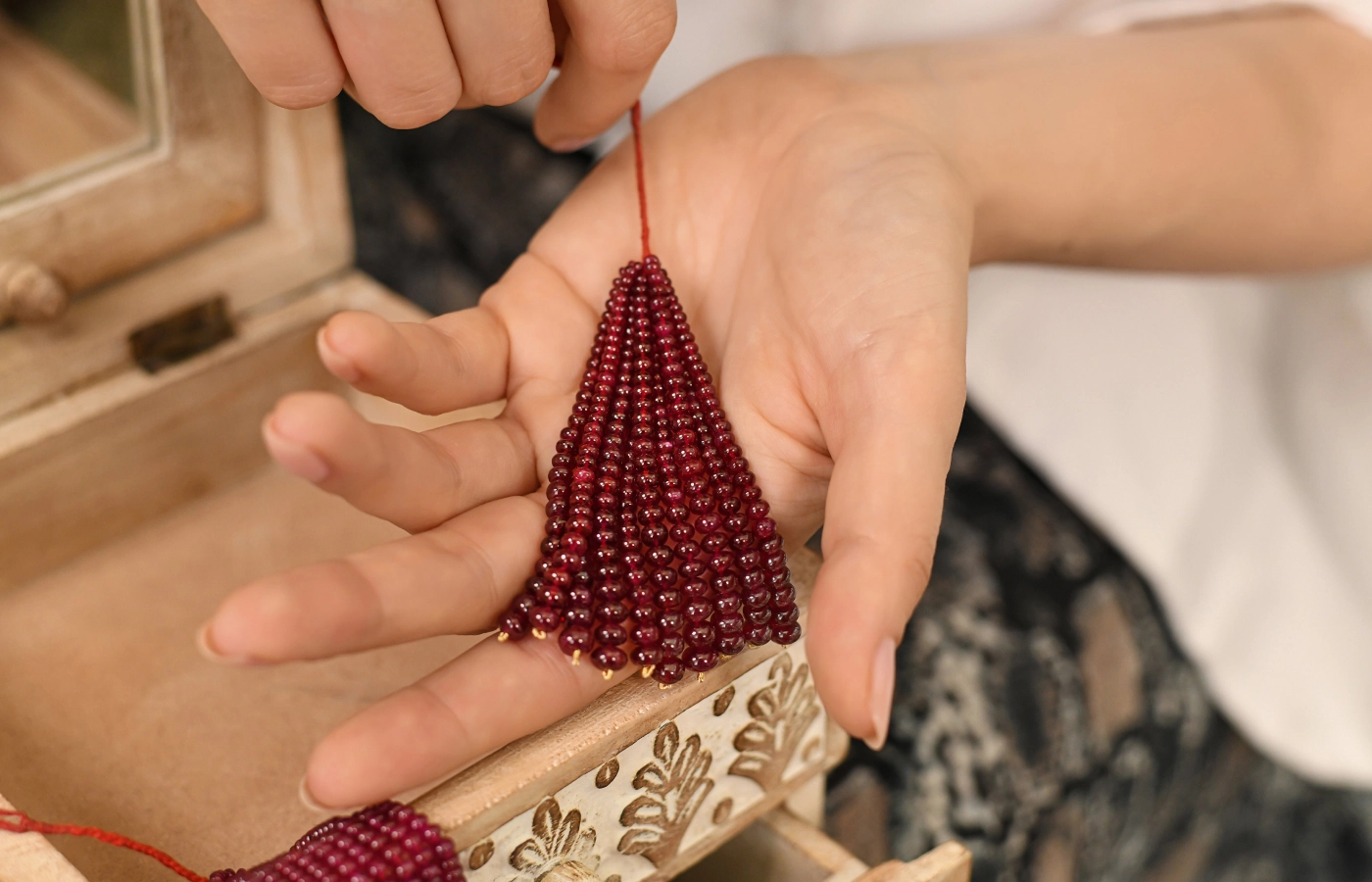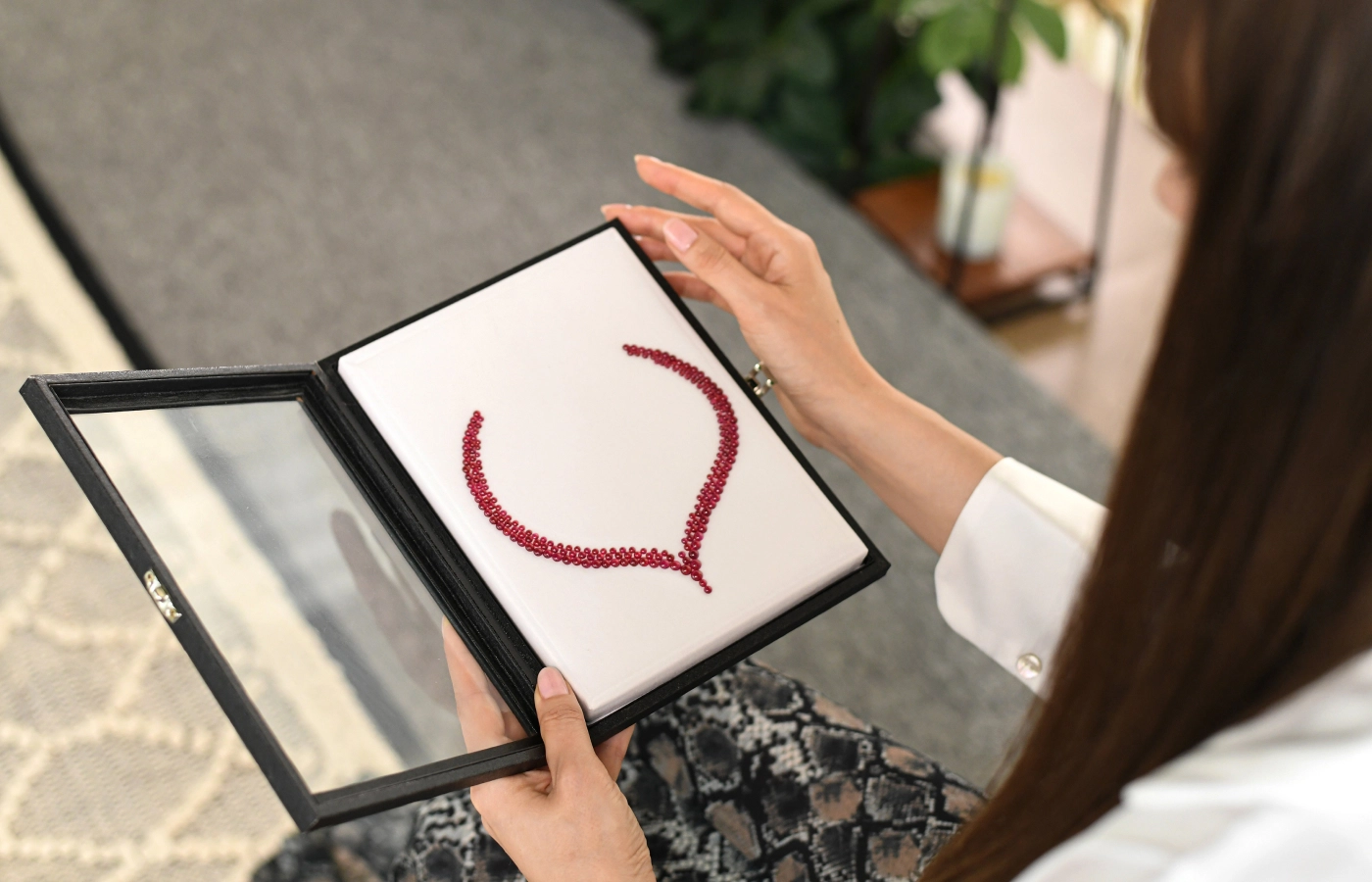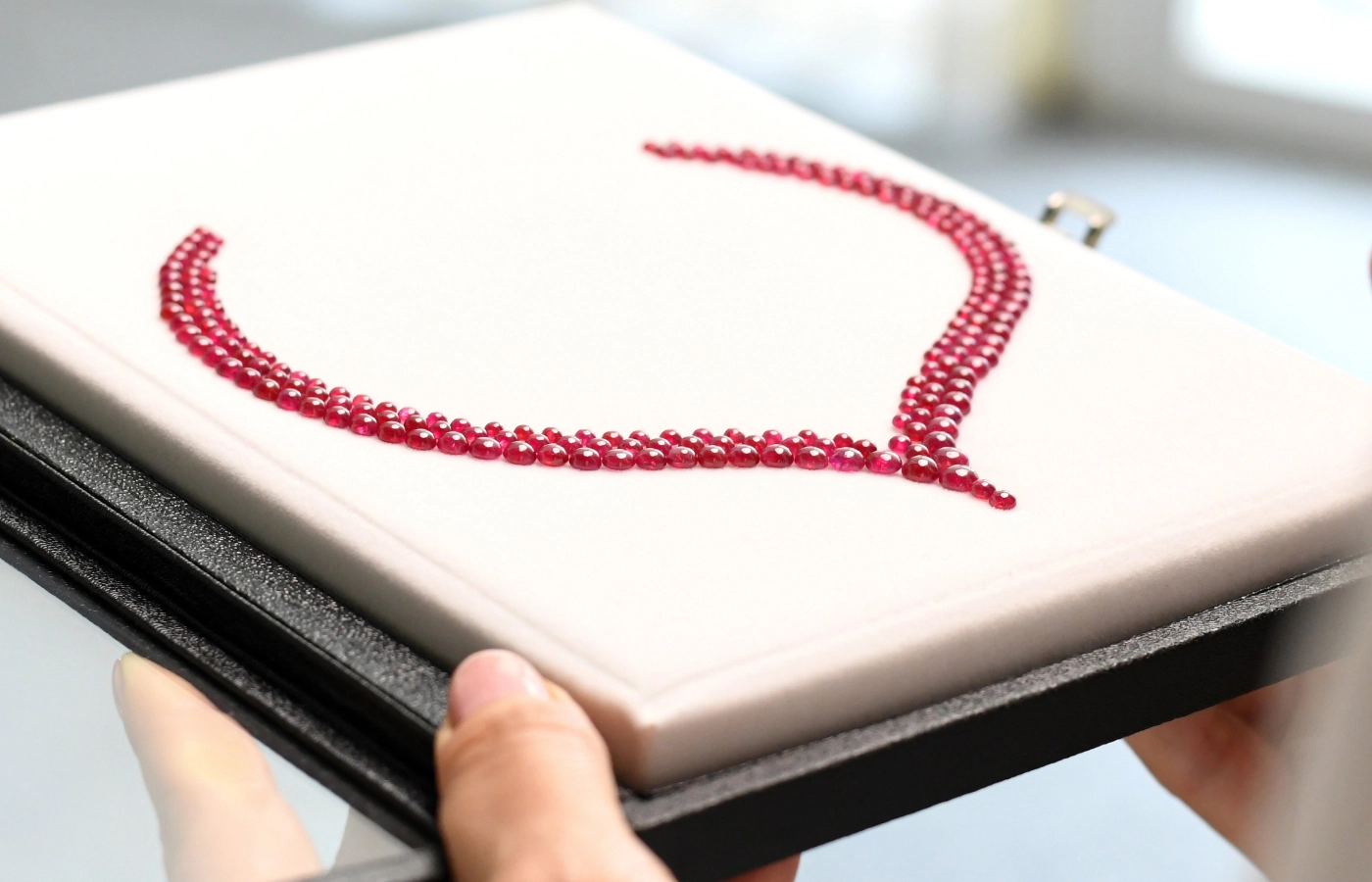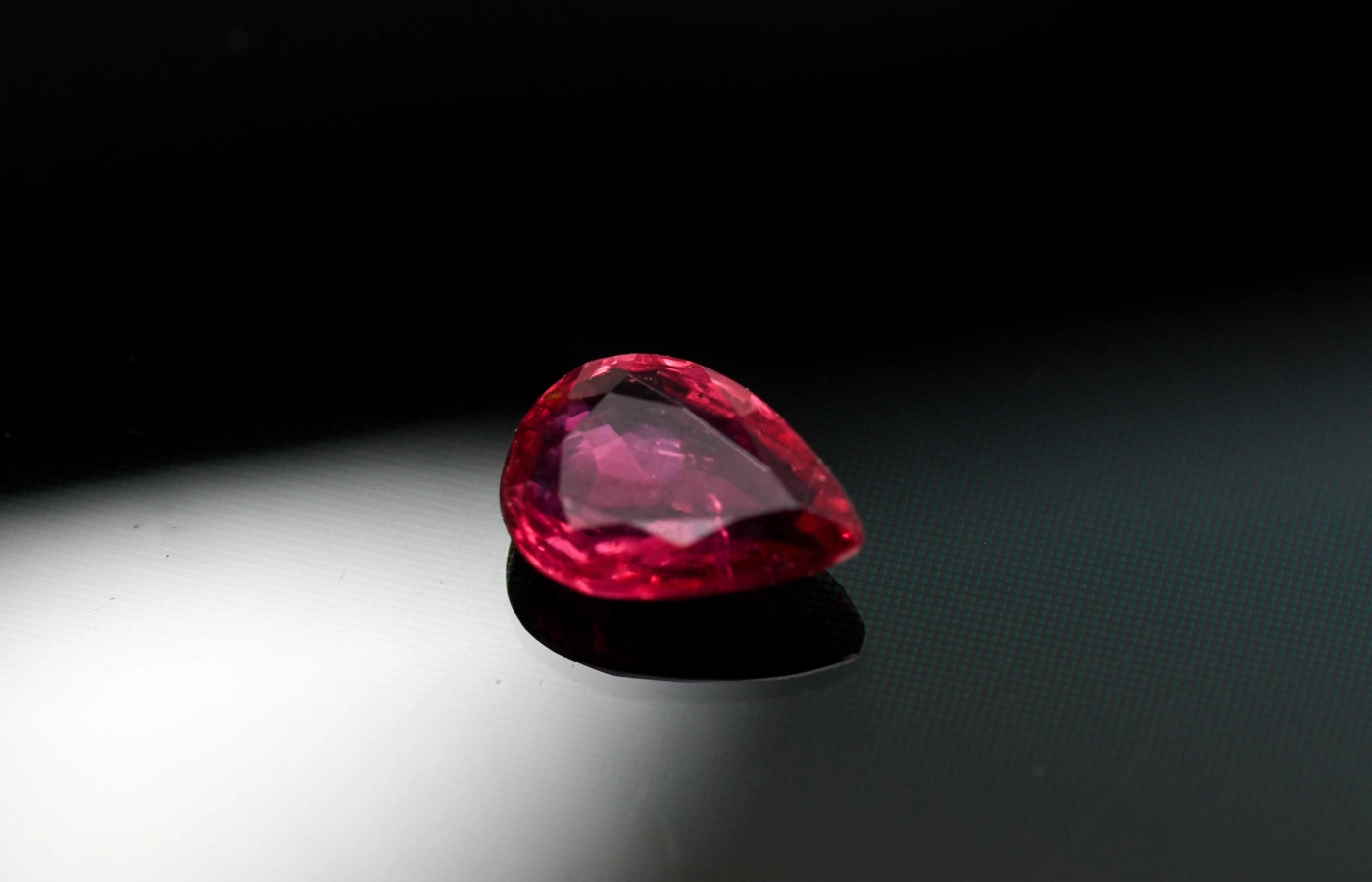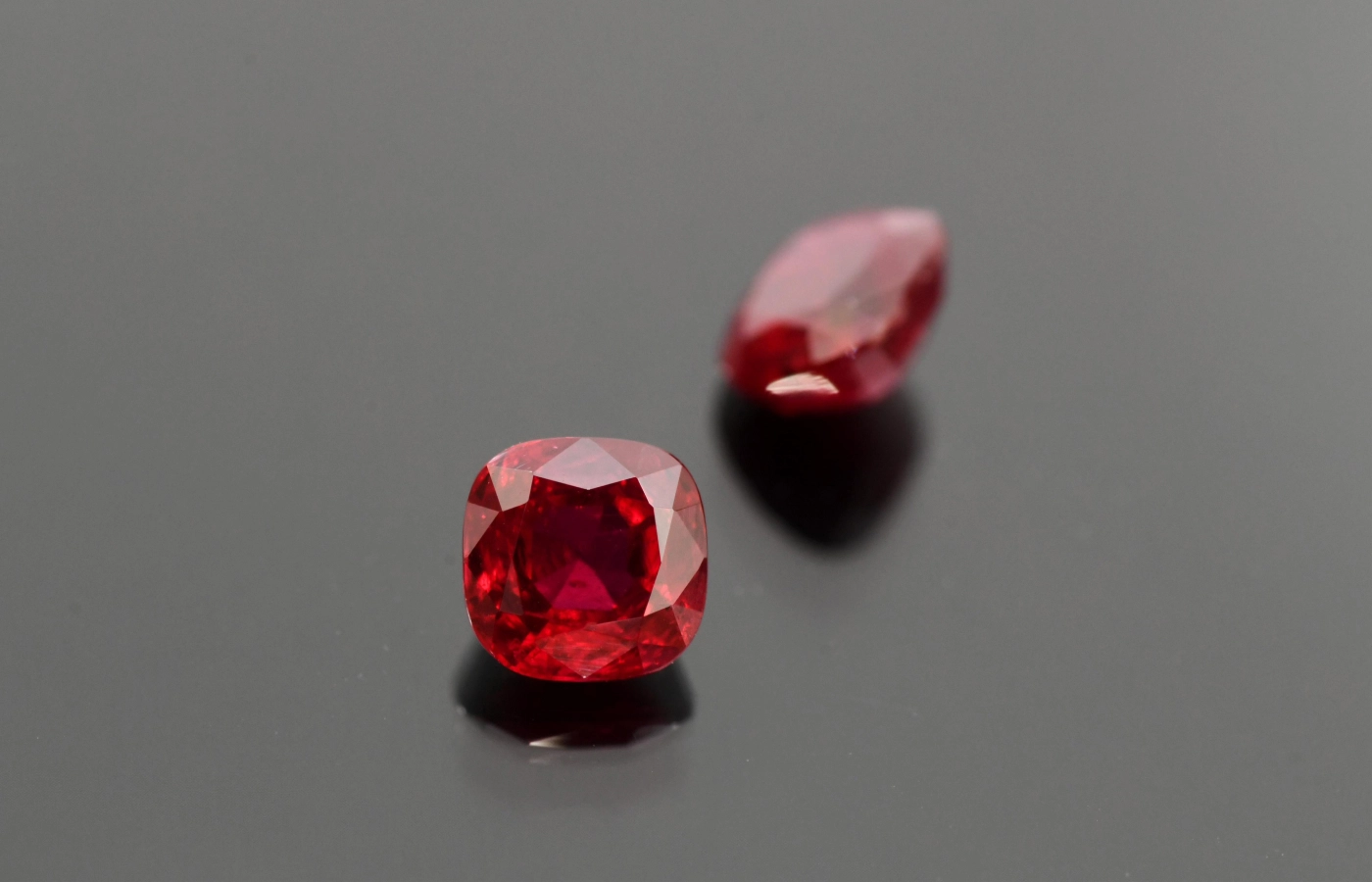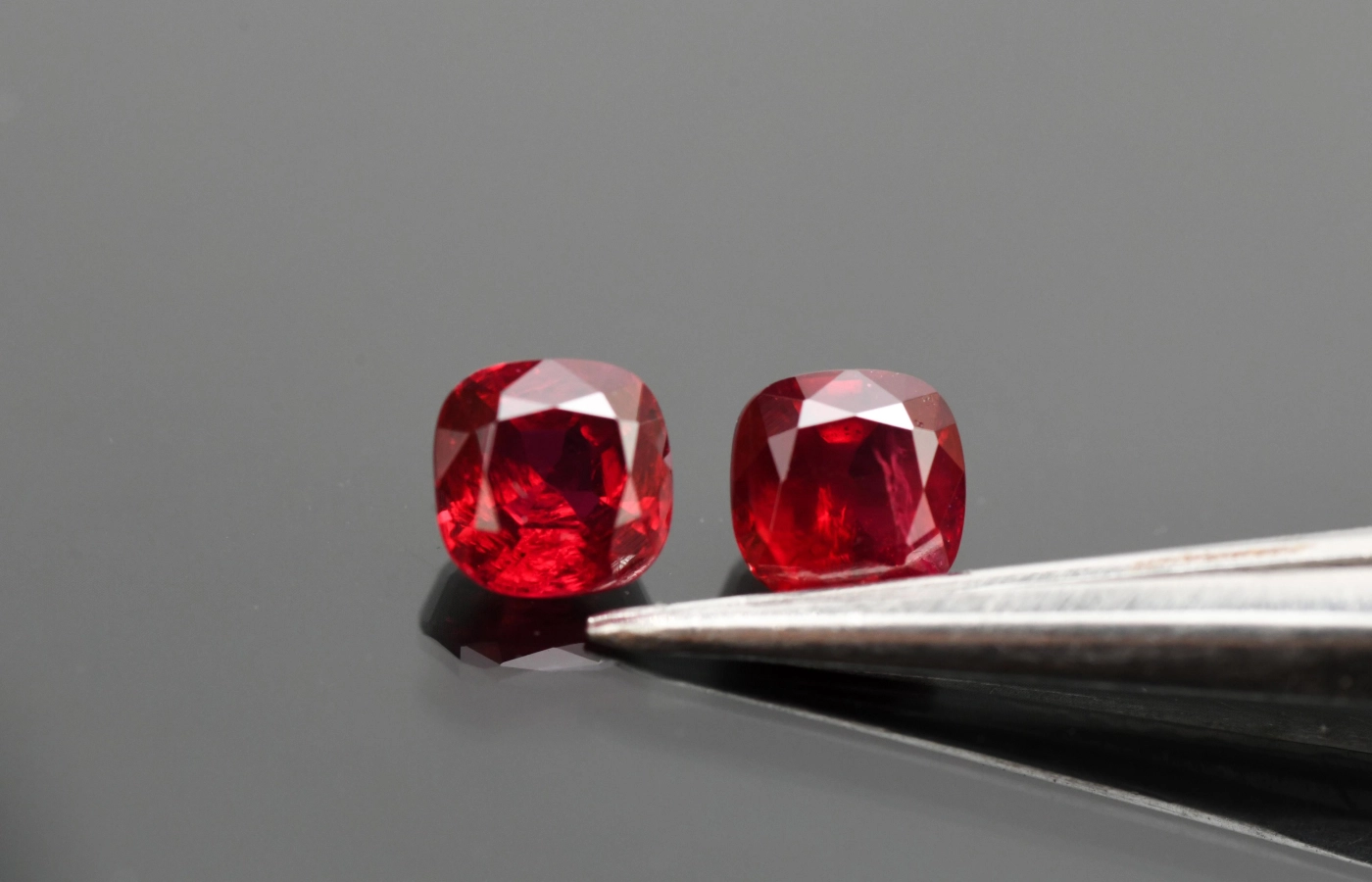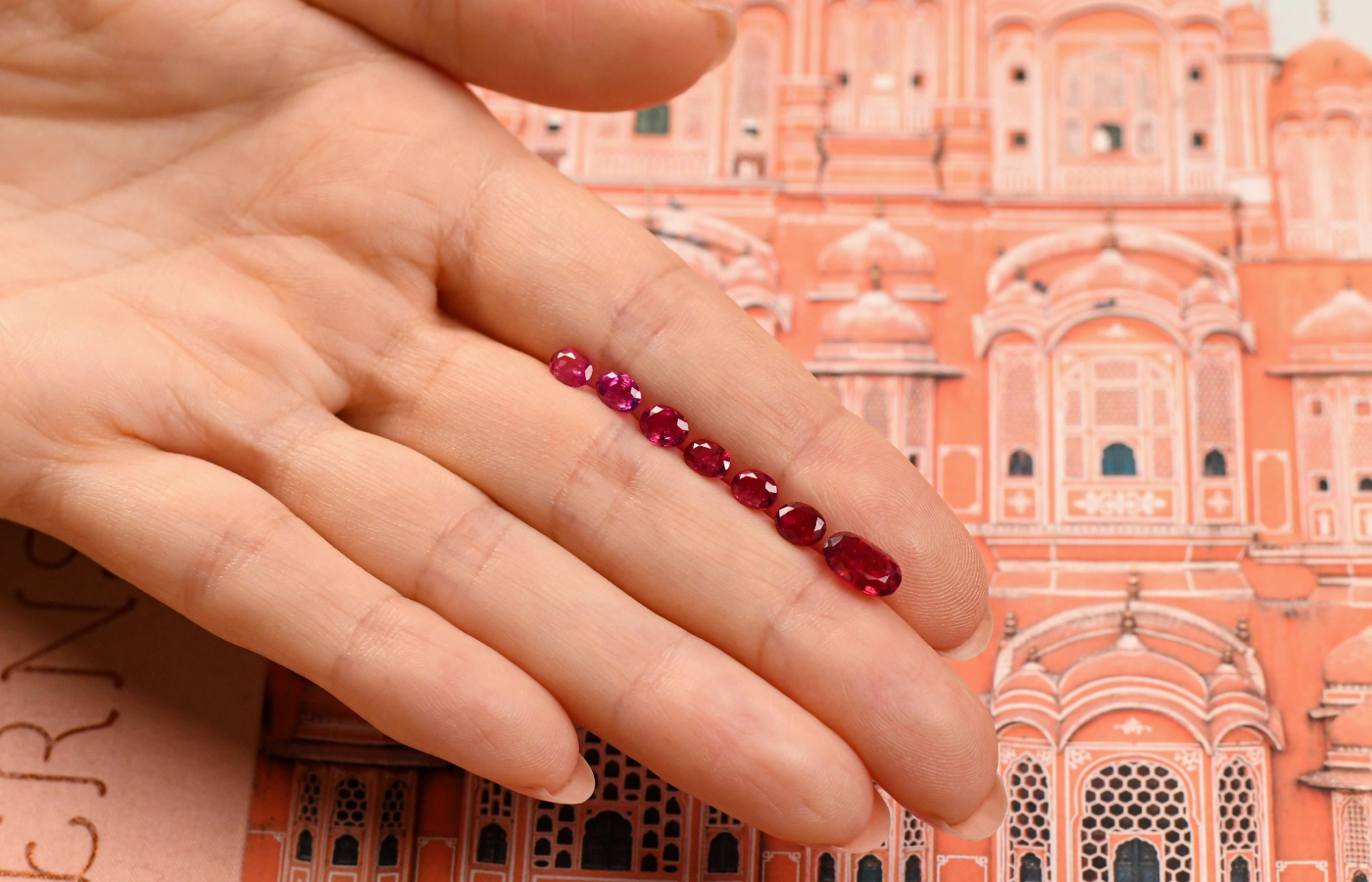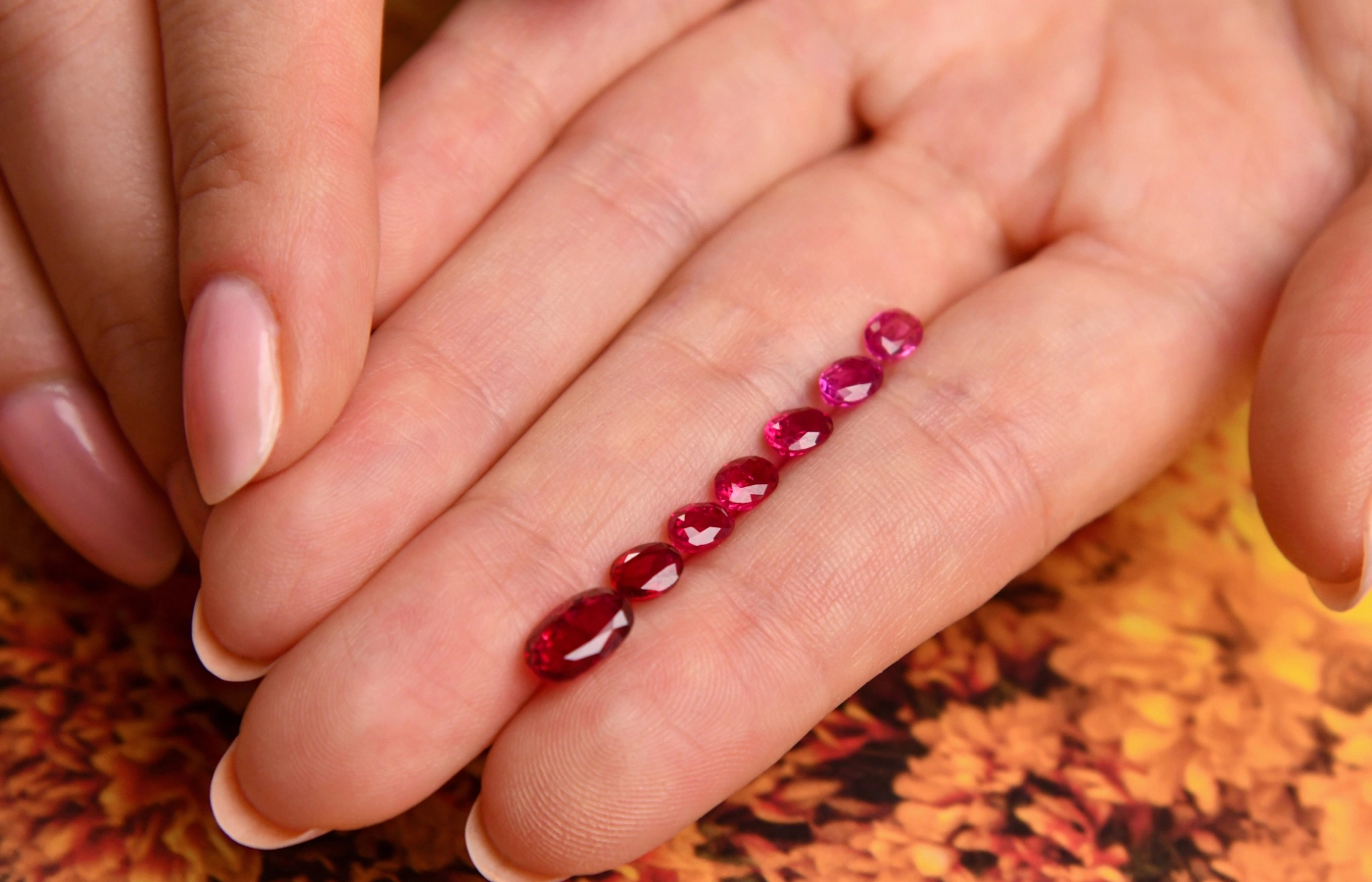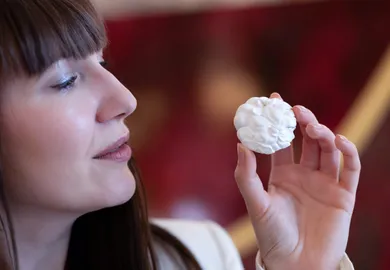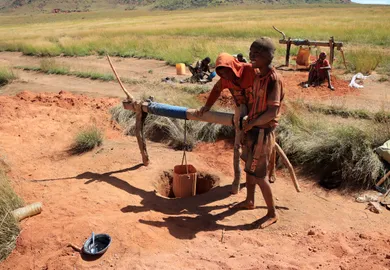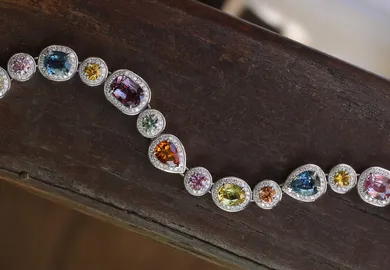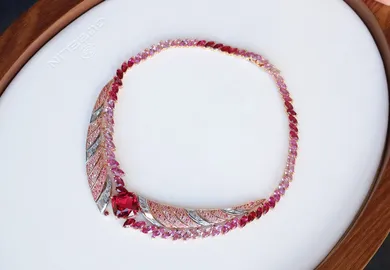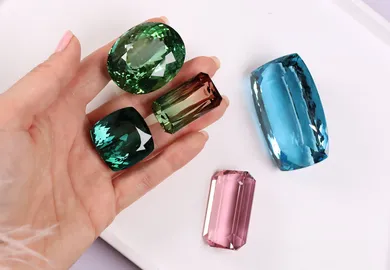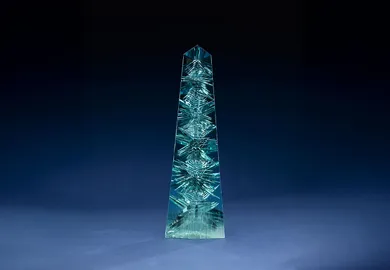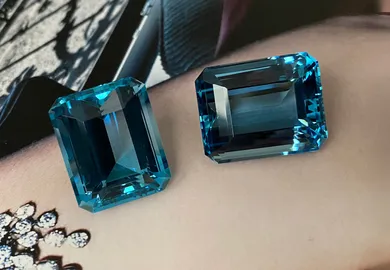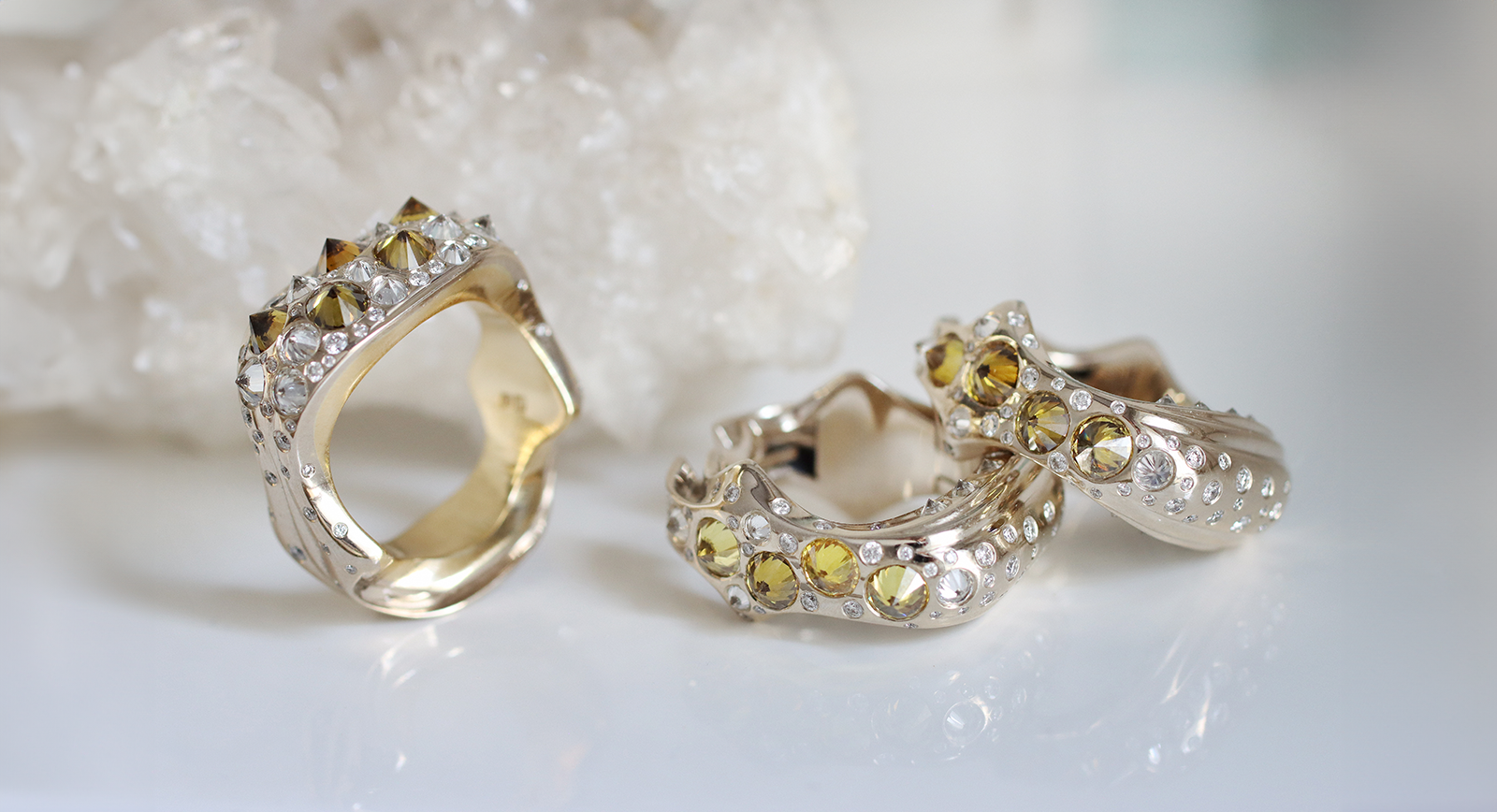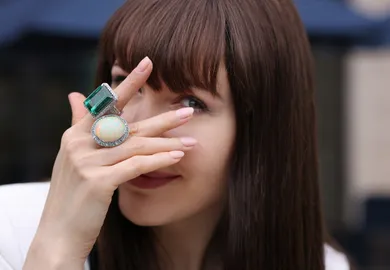
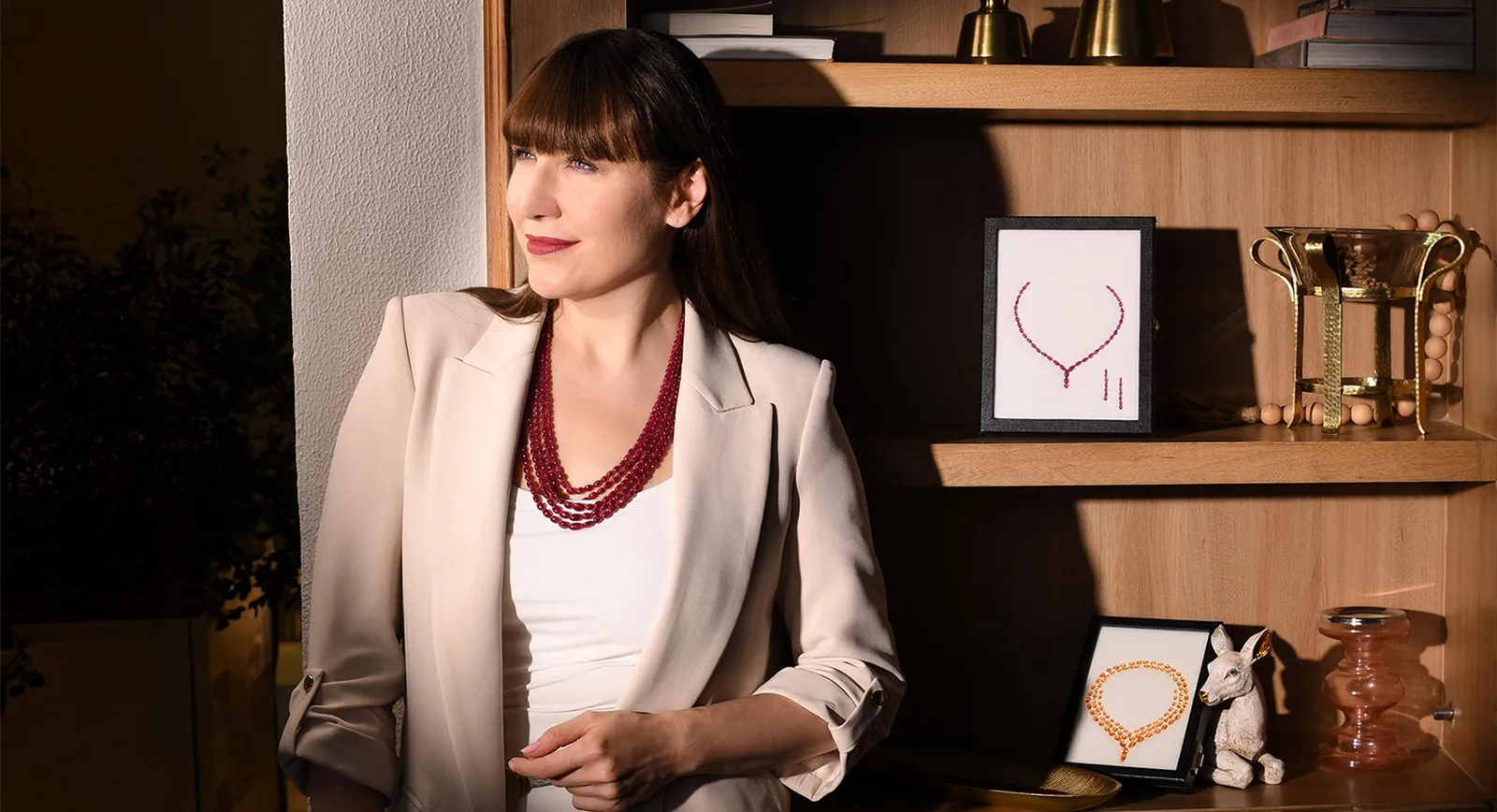
Bountiful Beads: Exploring Spectacular Odisha Rubies with Minehaus
When I met with Harsh and Shubham Chhabra of Jaipur-based gem-cutting company Minehaus earlier this year, the focus of our conversation was on their company’s history and its beautiful selection of traditional and fancy-cut spinels. However, while touring the company’s facility, there was something that kept catching my eye… rich red rubies in various forms: faceted, cabochons and beads. Some were arranged as layouts while others were put together in strings and tassels. Since then, I couldn’t get these perfectly matching orbs of corundum out of my mind, so it was clear I needed to come back to ask more questions! Here are the highlights of my mineral investigations…
Minehaus is known for producing exceptional gemstones like spinels, garnets, corundums and beryls. You can read more about its history in this article, which recounts my visit to Jaipur in the spring. At the time, I was blown away by the business’ adventurous and artistic cutting, although I would expect nothing less from its directors, Harsh and Shubham Chhabra, who are continuing a long family legacy of gemstone expertise.
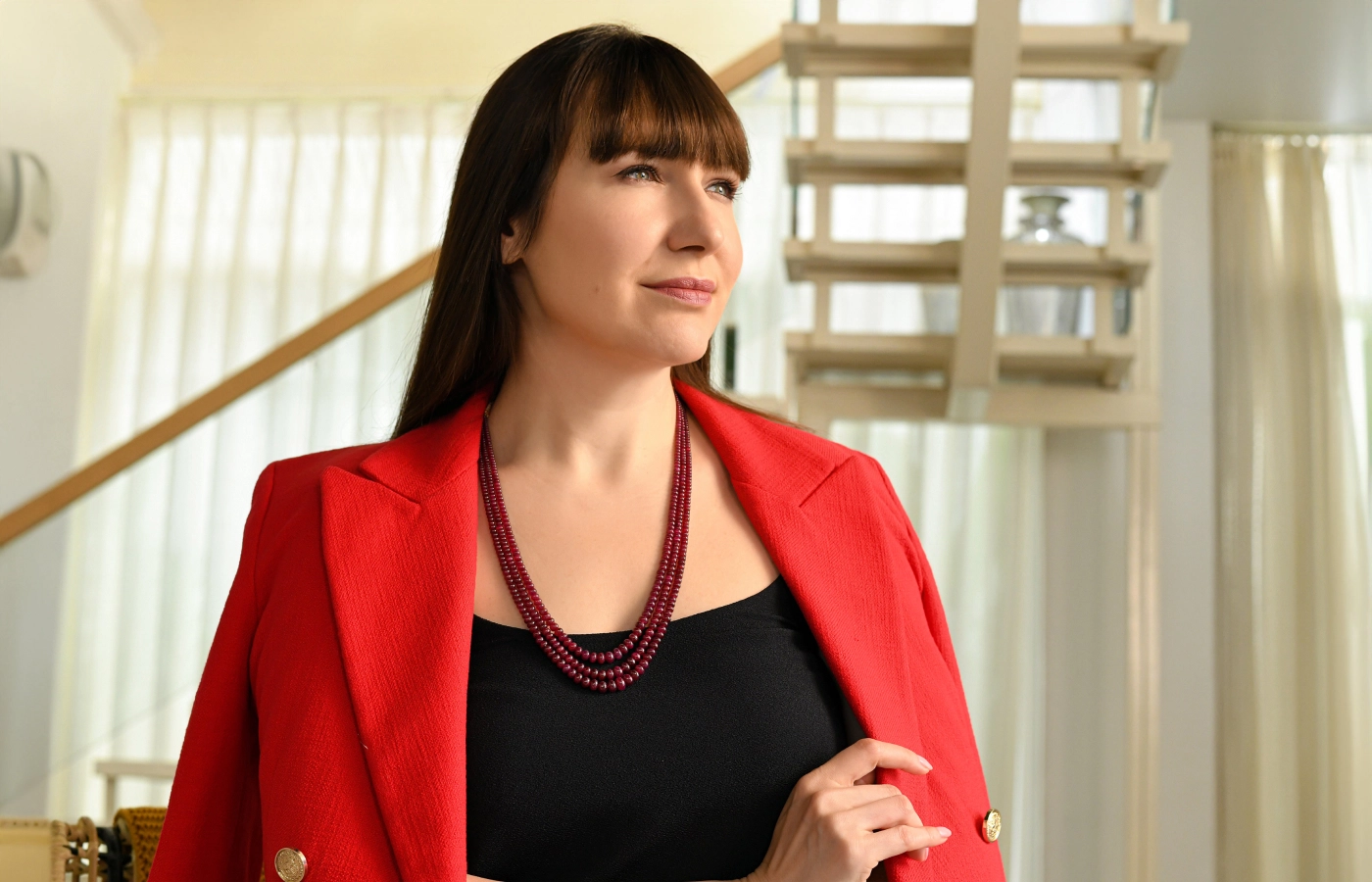
Katerina Perez wearing a necklace made in ruby beads from Odisha
During one of our conversations, the word ‘Odisha’ began peppering our back-and-forth about the company’s ruby manufacturing expertise, which started in earnest in 2000. I later learned that this is an Indian state in the east of the country, known for its ancient Hindu temples and artisanal ruby mining. Although Burma and Mozambique are more commonly referenced as the greatest sources of red corundum, Minehaus believes Odisha rubies, especially when cut into beautiful beads, can give these gems a run for their money in some instances. Let’s dive a little deeper…
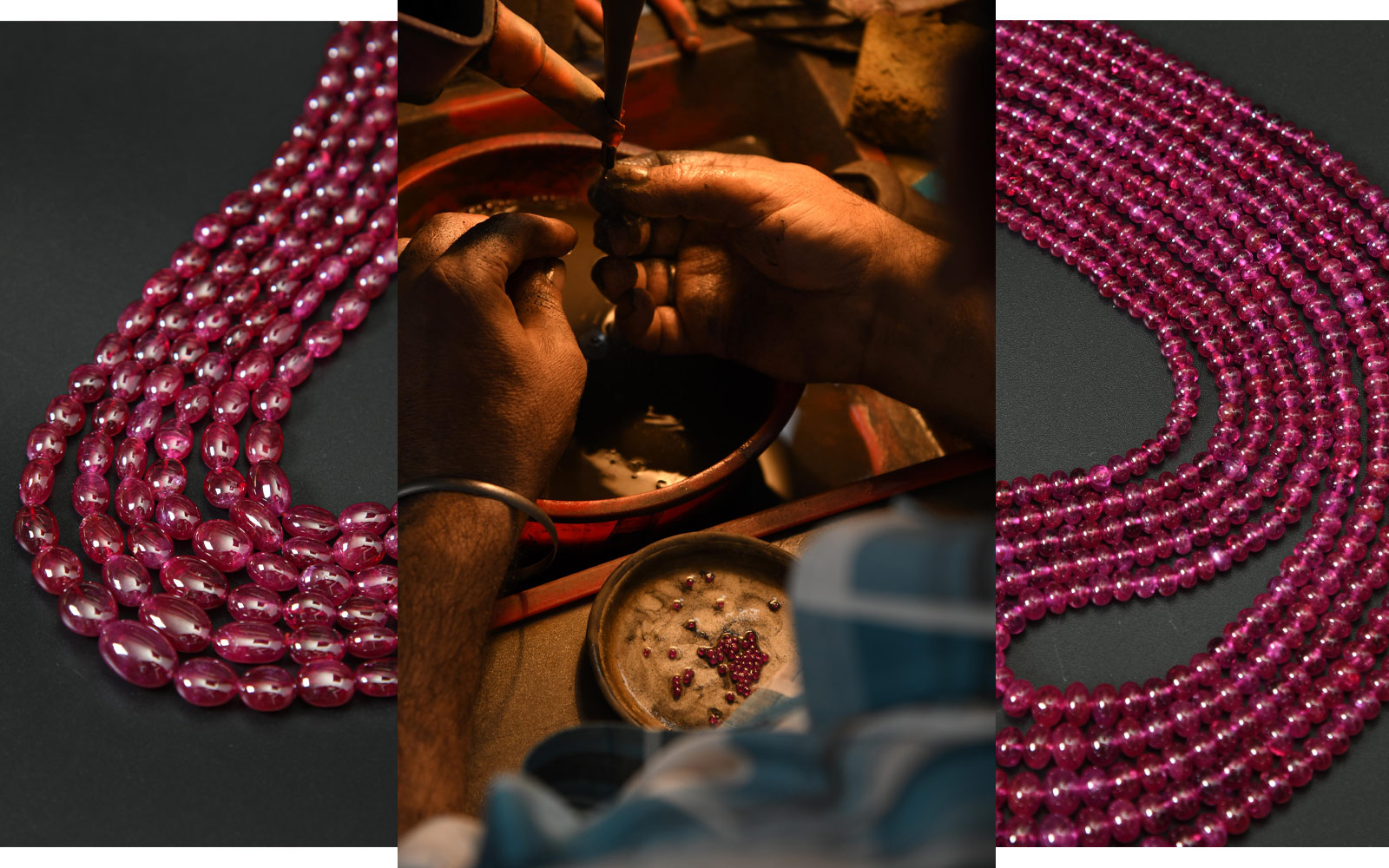
Ruby beads ‘in the making’ at Minehaus
Katerina Perez: What makes rubies from Odisha special? What are the characteristics of an Odisha ruby compared to rubies from Burma or Mozambique?
Harsh Chhabra: Rubies from Odisha are found in pocket deposits and are mined exclusively through artisanal methods. It can take years to assemble a collection of fine ruby material suitable for creating matching layouts or bead necklaces, which enhances their rarity.
Shubham Chhabra: I would say that rubies from Odisha are known for their unique and very prominent red colour, which makes them more beautiful than the other red corundums. For example, rubies from Burma have more purplish or pinkish-red tones. So, the strong red hue, high fluorescence, excellent hardness and brilliance of rubies from Odisha qualify them as ‘royal stones’.
KP: While looking through your collection I couldn’t help noticing that these rubies rarely exceed 5 carats in size, why is that?
SC: Natural growth of rubies in India incorporates many years of pressure and can result in deep fractures and inclusions. At Minehaus, we prefer to use only the finest material for crafting high-quality beads, cabochons and carvings rather than faceted stones. We think these pieces possess a unique beauty that, in many cases, can surpass even that of faceted gems!
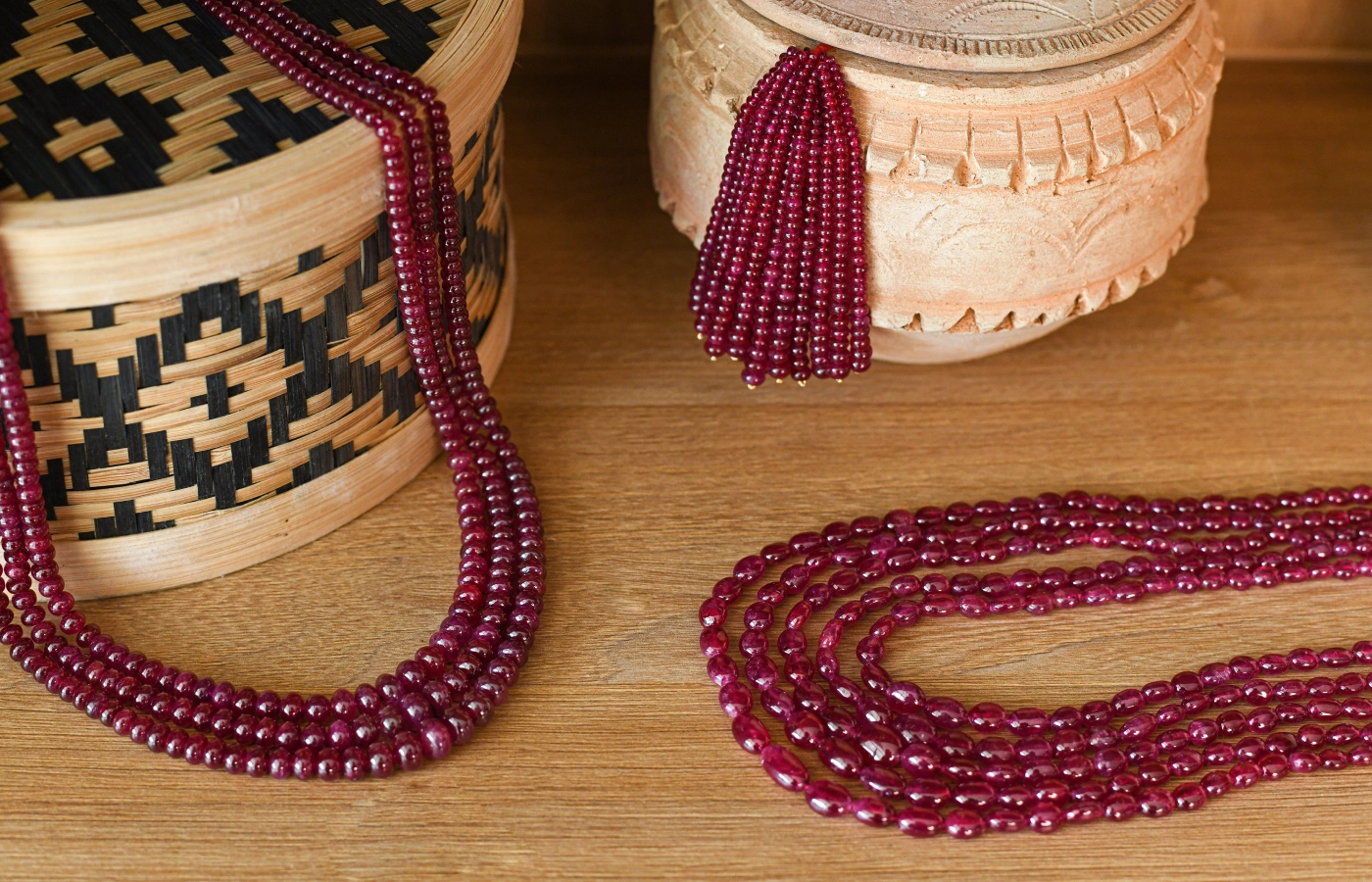
Odisha rubies strung in a tassel, round beads necklace and elongated beads necklace by Minehaus artisans
KP: Is this why you chose to specialise in ruby beads, tassels and cabochons? Do you think creating precious gemstone beads is underappreciated in comparison to faceted stones?
SC: Our father who founded the company in 1981, Harsh and I believe that crafting exquisite ruby beads, cabochons, and carvings is an art form deeply rooted in history. These cuts, renowned for their ability to impart a bold and substantial feel to jewellery, have adorned some of the most iconic pieces throughout time. Today, they remain highly prized and used by leading top jewellery brands every year in their high jewellery collections. Our goal is to elevate these traditional cuts through our unique craftsmanship techniques, enhancing their beauty and timeless appeal.
KP: How challenging is it to match ruby beads into one continuous strand with the right size, saturation, colour and intensity? What are the challenges involved in bringing a string of ruby beads to life?
HC: Creating a perfectly matched strand of ruby beads is a highly meticulous process, requiring careful attention to colour, hue, saturation, and clarity. It begins with sorting the rough gemstones based on quality and colour. After the stones are pre-formed, they are sorted again by size, colour, and clarity to aid the polishers in their work. We use special a technique of polishing ruby beads using pure sandalwood coated with diamond powder, enhancing the shine and long-term polish stability. By focusing on crafting beads with precise shapes and angles, we ensure that light enters the beads in a way that creates a stunningly bright and captivating look when integrated into jewellery.
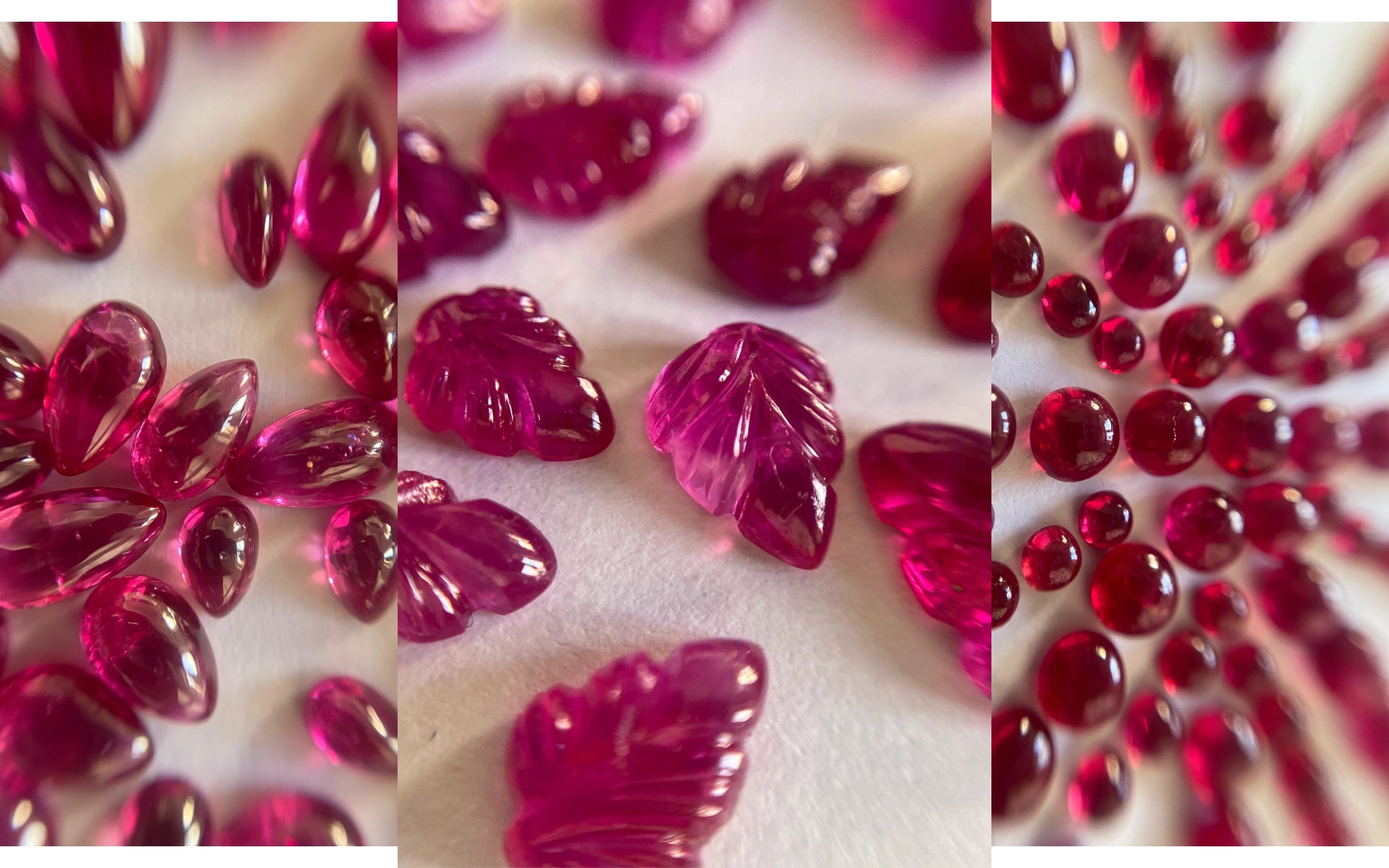
Minehaus rubies fashioned as drops, carved leaves and cabochons
SC: One more important thing to add: while many prioritise weight retention, our emphasis is always on achieving the perfect shape. This results in a maximum bead yield of 30-35%. Once polished, the beads are drilled to allow them to be strung. Before they are arranged into strands, a final round of sorting ensures that each strand is composed of perfectly matched beads. We take great care not to mix qualities or colours within a single strand or necklace, unlike many others in the industry who tend to overlook this level of precision.
HC: It is important to add that we prefer the pleasant red hue in rubies, but we offer a full range of colours from ‘Pigeon’s Blood’ to pinkish red to suit our clients’ diverse tastes.
KP: Speaking of ‘Pigeon’s Blood’, does this name still hold the same kind of power in the ruby trade? Do clients purposefully use this phase when requesting gemstones for their high jewels?
HC: Yes, ‘Pigeon’s Blood’ is widely regarded as the most sought-after and highly valued colour in rubies, often commanding a premium in the market due to its vivid, deep red hue with a hint of purple. Many collectors and connoisseurs appreciate its intense, rich tone, which has long been associated with the finest rubies. However, preferences for ruby colour can vary greatly among clients. While some gravitate towards the traditional and prestigious ‘Pigeon’s Blood’ shade, others favour lighter, more vibrant hues, such as bright pinkish reds or warmer tones. This diversity in taste highlights the subjective nature of gemstone appreciation, where personal style and aesthetic preferences play a significant role in determining which ruby shade is most desirable.
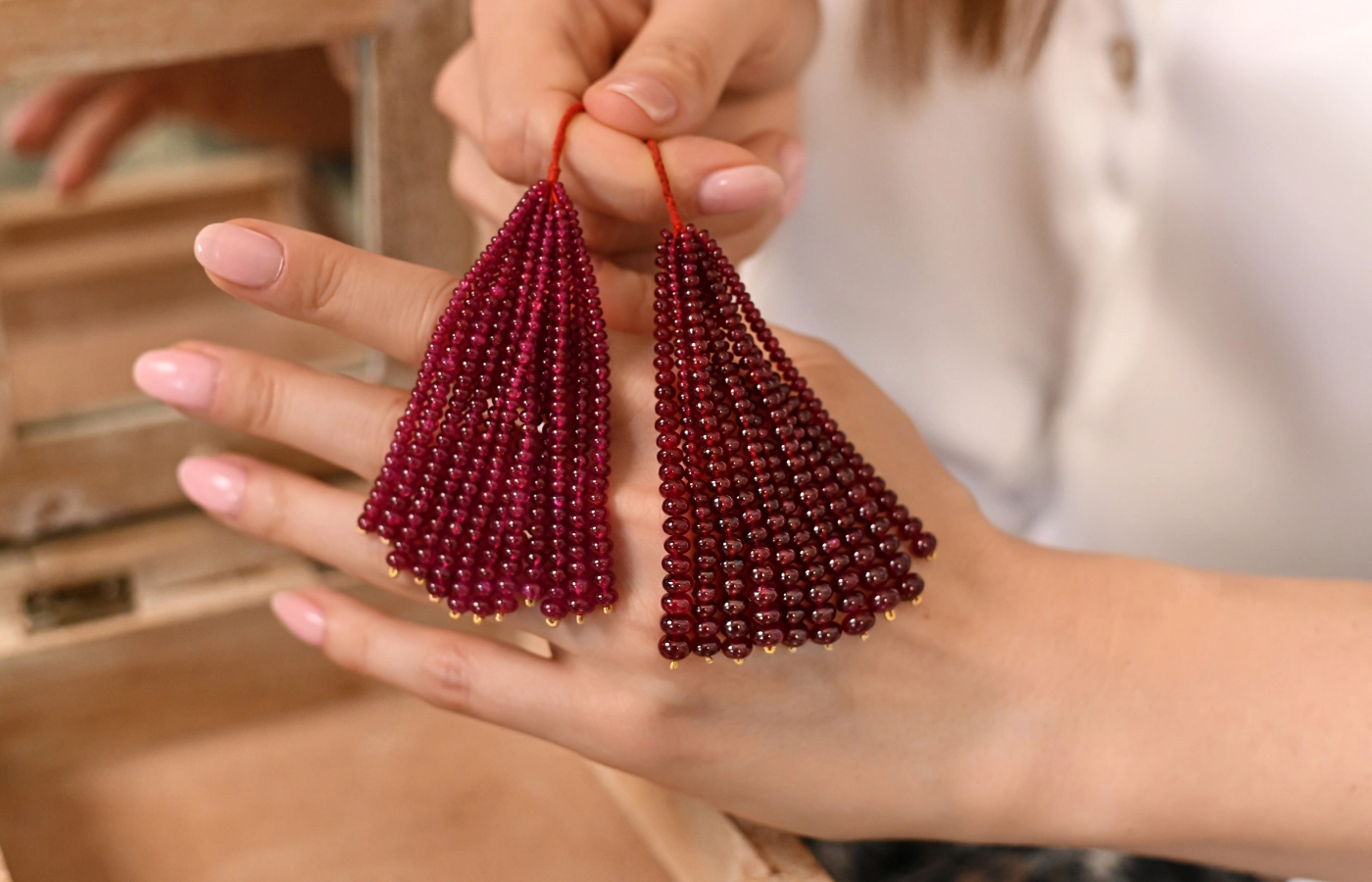
Look at the difference of colour hue between Odisha rubies on the left (more pinkish red) and right (deep red)
KP: Now let’s talk about Odisha rubies’ hardness, I have been told previously that they are harder than rubies from other locations. How true is this claim?
SC: All gemstones from Odisha are notably harder than those from other regions, with exceptionally strong crystals. During cutting, rubies from Odisha have only a 1% chance of breakage, even in highly included stones. In contrast, rubies from Burma are more prone to breaking, especially if they contain fissures or inclusions. At Minehaus, we have conducted experiments and found that rubies from Burma break more frequently that those from Odisha, which are far more resilient.
KP: And the last important question to ask is about the importance of supporting artisanal, small mining operations such as those in Odisha. Can you tell us more about what’s happening on the ground in this part of the world?
HC: Unlike Mozambique, for example, Odisha lacks mass ruby production. We take pride in securing 95% of the top-quality rubies from artisanal mining, actively promoting and supporting these miners. We are deeply committed to ethical sourcing, ensuring that our gemstones are procured responsibly. To uphold this principle, we work closely with artisanal miners, helping to support their livelihoods and sustain traditional mining communities. Our primary sources for rubies are the renowned mining regions of Odisha and Burma, both of which are known for producing exceptional quality stones that reflect our dedication to authenticity and craftsmanship. By prioritising ethical practices, we aim to foster a positive impact on the gemstone industry while delivering superior products to our clients.
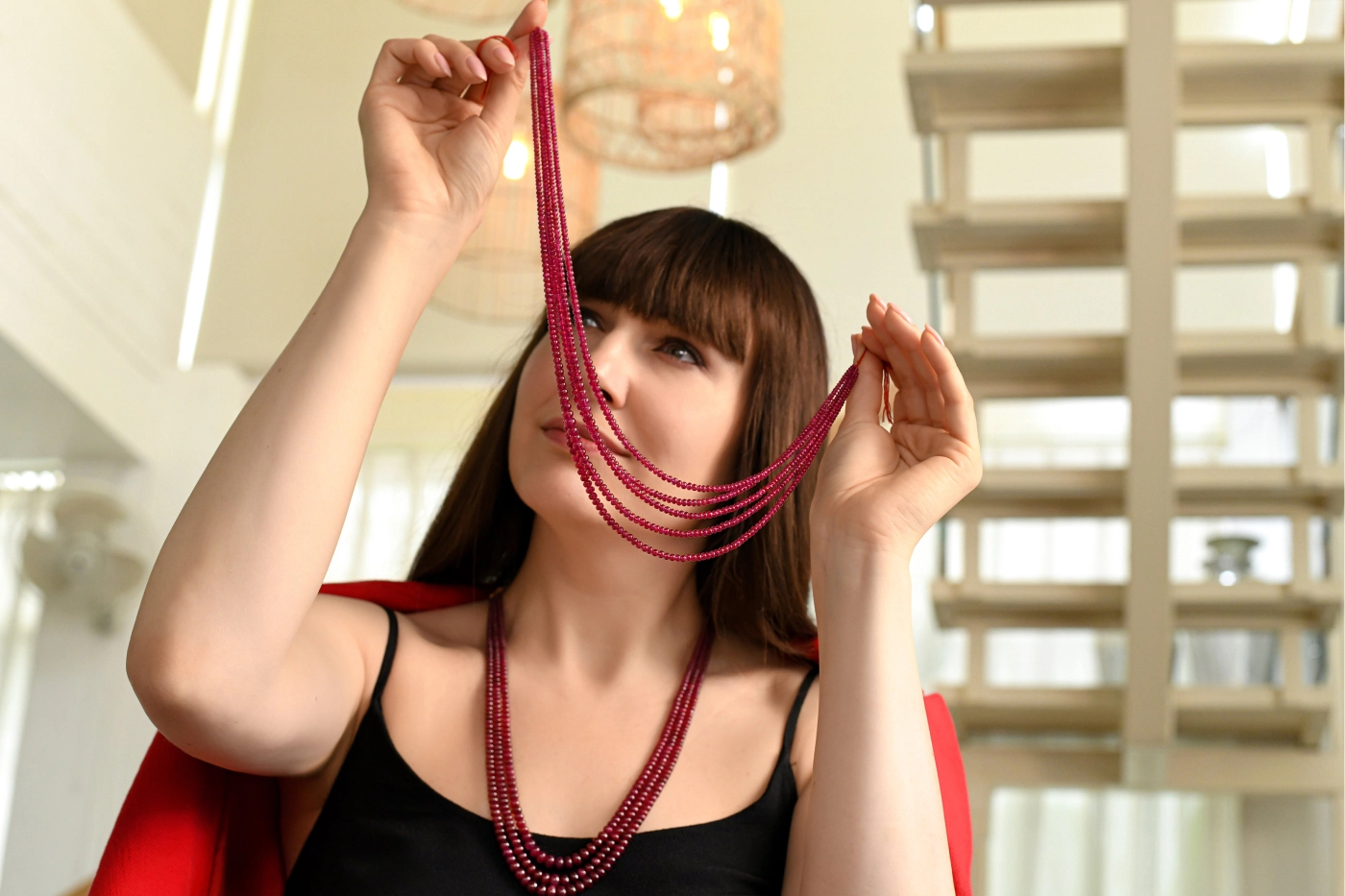
Katerina Perez holding Odisha ruby beads necklace weighing over 350 carats manufactured by Minehaus
Sometimes, when I am visiting a gem-cutting company, the energy changes when the owner starts talking about a specific mineral. I always think this is because of the underlying passion and excitement; to share your expertise with the world is a special thing indeed. I felt this when I spoke to the Chhabra brothers about spinels, and I felt it during this conversation about ruby beads. These gems may not always be at the top of collectors’ wish lists, but a perfectly matching string of Odisha rubies would be a treat for any high jewellery collection. I am sure having read this article you would agree!

WORDS
Katerina Perez is a jewellery insider, journalist and brand consultant with more than 15 years’ experience in the jewellery sector. Paris-based, Katerina has worked as a freelance journalist and content editor since 2011, writing articles for international publications. To share her jewellery knowledge and expertise, Katerina founded this website and launched her @katerina_perez Instagram in 2013.
